CSS Interview Questions
Last Updated by Monika Dadool
0 14708
Coding Tag provides you the most essential CSS interview questions and answers. These questions will definitely inspire and increase the student's confidence level.
Just go through these selective CSS Interview Questions before facing any job interview and to make a good impression. These questions are in simple languages that within one read, you can remember all the basic concepts.
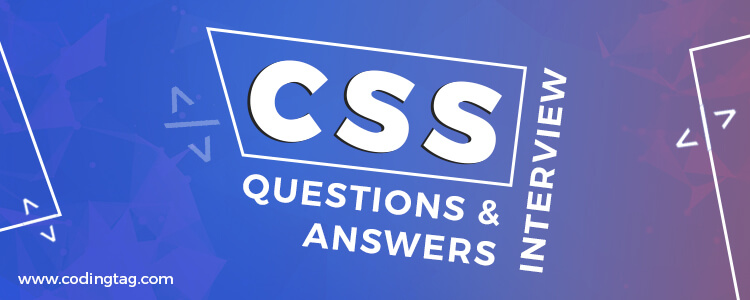
50+ CSS Interview Questions Answers
1. What is CSS?
CSS stands for Cascading Style Sheets, Cascading means flow, style means to design and customization like custom hide, custom position on HTML element, and sheet refers to a digital document, which contains the size of HTML.CSS is also a markup language similar to HTML, It illustrates how HTML elements are to be shown on screen.
2. Why we use CSS, if we have already HTML for customization?
With the use of CSS, we are able to create more attractive, affecting, and customized web pages by doing less coding and reduce time also.
3. What are the requirements for CSS?
a) Web page with HTML structure
b) Browser
c) Text Editor (Notepad ++, Brackets, etc)
After these three elements, first we have to create a code block of CSS and then establish a link between that CSS code and elements.
4. Explain some benefits of CSS?
- Viewing options
- Browser compatibility
- Bandwidth reductions
- Creative look
- Size of page is less
- Simple to implement and learn
- Impressive and efficient performance
- Download time is faster
- It contains SEO (Search Engine Optimization) benefits
- It contains lightweight code, which is easy to maintain and update
- It contains more accessibility
Note: A personal piece of advice, buy this book that will help you to get insights into HTML
5. Type of CSS?
CSS comes in three types:- External
- Internal
- Inline
Internal CSS: In internal CSS, only one page is affected and coding is done between <style></style> of <head> section of particularized page. Classes and IDs are used to refer to and reuse that code. Uploading multiple files is not required in internal CSS because both CSS and HTML are in the same file. Page loading time is increased.
Inline CSS: Inline styles affect only the specific tag they are applied to. These styles are directly written in the tag in the HTML document.
External CSS: The most acceptable way to add CSS to our website is to link it with an external .css file. If there is any modification in the external CSS file, it will be globally reflected.
The size of the HTML page is small and clear. A reference to an external CSS file is put in the <head> section of the page. The styles of numerous documents can be organized from one single file.
6. An important CSS interview question that can be asked by the recruiter is what are the different variations of CSS?
- CSS 1
- CSS 2
- CSS 2.1
- CSS 3
- CSS 4
- CSS 5
7. Who maintains the CSS specifications?
World Wide Web Consortium8. Is more than one declaration can be added in CSS?
Yes, it can be added with the use of a semicolon9. What is CSS Box Model and what are its elements?
This box specifies the layout and design of CSS elements. The elements consist of border, content, padding, and margin.Margin: margin is the topmost layer which visualizes overall structure. It clears an area exterior to the border.
Content: The actual content of the box is shown which includes text, images, etc.
Border: The border is an area around the content and padding. Affected by the background color.
Padding: padding is transparent. It clears an area around the content.
FREE DOWNLOAD CSS Interview Questions PDF
10. What are Image sprites with context to CSS?
It acts as an image container, containing collections of images, used to reduce the no of server requests network congestion and to save bandwidth.Website containing large images takes a time to load, and generate no of server requests, image sprites are used to reduce that requests.
An image sprite merges multiple images having the same size into a single image.
The main advantages of image sprites are:
a) Users can experience faster load times.
b) Large throughput with low uses of resources.
c) Increase overall web performance.
11. What are the shorthand properties?
With the use of one property, we can specify several properties. Shorthand properties in CSS are used to make our code more precise and simple.The most frequently used shorthand properties are list properties, background properties, fond properties, transition properties, and border and outline properties.
12. Which property is used to set the text-shadow around a text?
text-shadow13. Explain nesting and grouping in CSS?
Nesting and grouping are the two ways to reduce page size and to make code simple.GROUPING: With the use of the same values of properties, selectors can be grouped.
Code can be reduced and rewriting can be avoided.
NESTING: To specify a selector within a selector.
14. What are float properties in CSS?
Float determines how to float along with the left object or right side. Float properties are mainly used for positioning and layout modification.float: left;
float: right;
float: none;
15. How can backward compatibility be designed in CSS?
HTML sheet methods are joined together with CSS and accordingly used.16. Explain the use of the Z index function?
It is used to specify the stacked series of an element. Condition of Z index is that it works only on positional elements like position:relative, position:fixed or position:absolute.When CSS is used for positioning, there may occur overlapping, Z index help to specify that overlapping.
17. Differentiate between physical tags and logical tags?
Logical tags are old versions whereas physical tags are new versions. Logical tags are not good in appearance whereas physical tags are known as presentational- mark up.18. What is a CSS pre-processor?
It is specially designed for the program from which we can generate CSS from pre-processor's own unique syntax. It is also known as a scripting language that can extend CSS.It is used to make snippets and libraries sharable, We can able to use mathematical functions, define variables and nested syntax. The most common pre-processor used nowadays are SASS, LESS, Stylus, post CSS.
19. CSS is case sensitive?
CSS is not case sensitive but it acts as case sensitive, when we try to write a document XHTML doctype along with XML declaration.20. What are CSS vendor prefixes? Name some Vender prefixes?
CSS is used to make our website compatible with the device. Vender prefix means the prefixes of the browser. Normally prefixes are already defined in CSS. After the advancement of CSS, some additional features are added; sometimes we are not able to update our old browser.Our old browser does not have any information about the working of some properties. To make our browser aware of these properties, vendor prefixes are used. We have to use CJS; it contains all the meaning and working of all the properties.
Following are some familiar vendor prefixes:
-moz- (Firefox)
-webkit- (Safari, Chrome)
-ms- (Internet Explorer)
-o- (Opera)
-webkit- (android)
21. How do you define a pseudo class in CSS? What are they used for?
pseudo classes are used to style content dynamically. pseudo_class is a keyword added with selector specify the special state of an element.For example: To style on focused element.
syntax selector:pseudo-class {
property:value;
}22. How can we add comments in CSS Code?
In CSS code, we can add comments by /* and */.23. Explain some new properties introduced in CSS3?
Following are some new features introduced in CSS3:- box-shadow
- border-radius
- animation
- resize
- background-size
- multiple background image
- text-stroke
- text-overflow
- gradient
- transition
- text-shadow
24. What are child selectors in CSS?
Child selectors serve as a method of grouping a block of elements, that cascade from a parent element. It is easy and precise as compared to the traditional selector.This selector is used for element matching. Greater than symbol(>) is used between two selectors.
body > p {color: red;}
25. What is the difference between and display:none and visibility:hidden?
This concept of visibility and display can be a part of advanced CSS interview questions and high-level courses also. Major differences are mentioned below:
visibility: hidden It can be used with transition-delay.
It hides the element of the page and affects the layout by taking space.
display: hidden It ignores transition-delay.
It removes the element of the page and allows other elements to fill up space. which means that it does not take up space.
26. Name some new texts added in CSS3?
text-overflow used to signalize the user about non displayed overflowed content.word-break used to break words.
word-wrap is the property that allows us to break lengthy words and turn out or wrap onto the next line.
27. What are the "position" attribute values found in CSS?
Following are the possible attribute found in CSS:- Fixed
- Relative
- Absolute
- Inherit
- Static
28. What is the use of Gradients in CSS?
Gradients in CSS are used to splash the solution of two or more colors. For example Ukraine. There are two types of Gradients.1. Radial
2. Linear
Radial: Radial Gradients arise from the center.
Linear: Linear Gradients are used to organize two or more than two colors in linear formats such as top to bottom, bottom to top, or diagonally.
29. Is CSS classes can be declared multiple times?
Yes30. What are the benefits of Media queries in CSS?
A media query is a CSS approach that was introduced in CSS3, in which @media rule has been used.Media queries have been designed to serve specific styles to specific media or devices and to check height, width, orientation, and resolution of viewpoint and device.
31. How we can lighten the font-weight in CSS?
The property named "font-weight" can be used.32. What is the class selector?
class selector defines style rules based on the class attribute of the elements.
All the elements having that class will be formatted according to the defined rule.
Example:
.classname {
color: #fff;
}
33. What is an Id selector?
Id selector defines style rules based on the id attribute of the elements.
All the elements having that id will be formatted according to the defined rule.
Example:
#Idname {
color: #000000;
}34. Explain the concept of Tweening.
Tweening is the process in which we can generating intermediate frames between two images.
It gives the impression that the first image which develops into the second image.
It is mainly used for creating all types of animations in CSS3.
In CSS3, Transforms (matrix, translate, rotate, scale) can be used to achieve the tweening method.
35. What is CSS flexbox?
flexbox allows you to design a flexible responsive layout structure without using any float or positioning property of CSS. To use CSS flexbox you need to define a flex container first.
flexbox-container {
display: flex;
background-color: #FDFDFD;
}36. What is the difference between padding and margin?
In CSS, the margin is the property in which we create outer space of an element.
In CSS, CSS margin also has properties like,
- margin-top
- margin-right
- margin-bottom
- Margin-left
Margin property has defined in values.
- Auto
- Length
- %
- Inherit
In CSS, The padding properties are used to generate space around an element's content, inside of any defined borders.
CSS padding also has properties like,
- Padding-top
- Padding-right
- Padding-bottom
- Padding-left
Note: Negative values are not allowed in padding.
37. What are the different units used in CSS?
CSS has two types of Different unit lengths. one is Relative length and the second is the absolute length.
Relative Length
- em - Relative to the font-size of the element (2em means 2 times the size of the current font)
- ex - Relative to the x-height of the current font. It used a minimum.
- ch - Relative to the width of the "0" (zero)
- rem - Relative to font-size of the root element
- vw - Relative to 1% of the width of the viewport*
- vh - Relative to 1% of the height of the viewport*
- vmin - Relative to 1% of viewport's* smaller dimension
- vmax - Relative to 1% of viewport's* larger dimension
- % - Relative to the parent element
Absolute Length
- CM - centimeters
- MM - millimeters
- IN - inches (1in = 96px = 2.54cm)
- PX - pixels (1px = 1/96th of 1in)
- PT - points (1pt = 1/72 of 1in)
- PC - picas (1pc = 12 pt)
38. What is the overflow property in CSS used for?
IN CSS, overflow property tells about what should happen if content overflows an element's box.
It means content overflow out of div. At that time we are used or to add scrollbars when an element's content is too big to fit in a specified area.
overflow property available in CSS -
- overflow: auto;
- overflow: none;
- overflow: scroll;
- overflow: visible;
39. How many formats can you specify a CSS color?
You can specify your color values in various formats.
1. Hex Code
Example:
.demo{color:#000000;}
2. Short Hex Code
Example:
p{color:#000;}
3. RGB %
Example:
p{color:rgb(50%,50%,50%);}
4. RGB Absolute
Example:
p{color:rgb(0,0,255);}
5. Keyboard
Example:
p{color:black;}
40. Explain the descendant selector in CSS?
CSS Descendant selectors are used when any style to be applied to an element when the element lies inside some element.
Example:
ul li {
color: #000;
}
41. Explain "Attribute Selector" in CSS?
CSS Attribute selector can be used to apply a style for an HTML element with a particular attribute.
Example:
input[type = "text"]{
color: #000;
}
42. What is the use of "float" property in CSS?
cssFloat property is used to allow an HTML element to be positioned horizontally.
cssFloat property can take the only two values either "left" or "right".
Example:
.democlass
{
float: right;
}
.demoname
{
float: left;
}43. Which type of media types in CSS?
List of media types in CSS:
- All
- Screen
- Projection
- Embossed
- Tty
- Tv
44. Explain opacity in CSS3?
Opacity is used to hide or show an element in CSS3.
Value '0' to hide the element and
Value '1' means showing an element.
Example:
/* used for hide element */
.classname{
opacity:0;
}
/* used for show element */
p{
opacity:1;
}
45. How to write a media query for mobiles?
Example:
@media screen and (max-width: 600px)
{
}
We can write our CSS.
It can directly affect mobile devices.
46. How we can override CSS?
We can use it With the help of ! important properties.
We can override CSS properties.
Example:
.sidelist{
width:50%;
}
.sidelist{
width:30% !important;
}
47. List some CSS frameworks?
- Bootstrap
- Semantic
- Materialize
- Bulma
- Foundation
- Pure CSS etc
48. What is the universal CSS selector?
universal CSS selector is used to selecting any type of element in an HTML page.
An asterisk ( * ) is used to denote a universal CSS selector.
It is useful when we want to set a default style for all the elements of an HTML page.
Syntax:
Example:
*
{
margin:0;
padding:0;
}
49. What is the difference between the class selector and ID selector?
In CSS, a Class selector define as a full stop (".") and an ID selector define a hash("#").
ID selector can be used to identify one element, but a class selector can be used to identify more than one.
50. What are CSS vendor prefixes? Can you name some of the more common ones that you're familiar with?
Vendor prefixes are extensions to CSS standards that can be added to these features to prevent incompatibilities from arising when the standard is extended.
CSS vendor prefixes for most browser list.
- -webkit-: Android, Chrome, iOS, and Safari
- -moz-: Mozilla Firefox
- -ms-: Internet Explorer
- -o-: Opera
51. How can the dimension be defined as an element?
Dimension properties can be defined by:
- Height
- Max-height
- Max-width
- Min-height
- Min-width
- Width
52. What are the various font-related attributes in CSS?
Below are the different font-related attributes available in CSS:
- Font-style
- Font-variant
- Font-weight
- Font-size/line-height
- Font-family
- Caption
- Icon
53. What is Responsive Web Design?
The responsive Web Design method is used to display the designed page perfectly on every screen size and device.
Example:
mobile, tablet,
desktop and laptop.
If you have any experience regarding technical interviews, you can share your experience with me and our readers through the comment box below .
I would love to listen to you! Also share with me the questions which you faced and how you answered them.
Also, keep sharing our blogs to help other aspirants prepare for the interview.

Share:

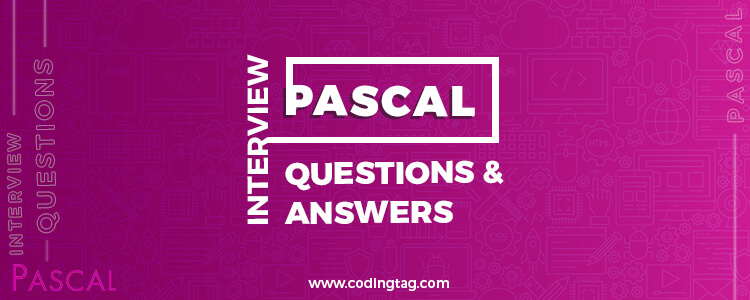
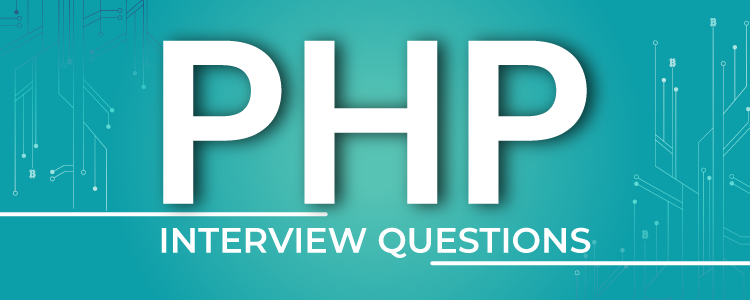
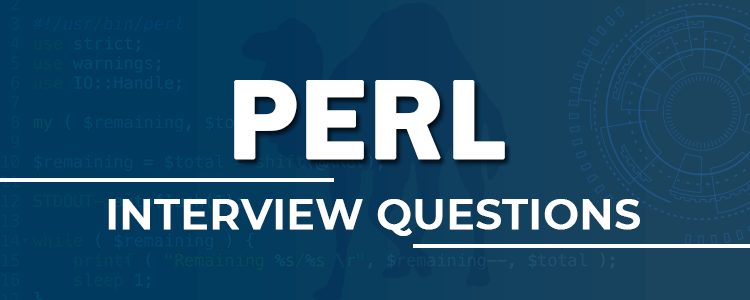
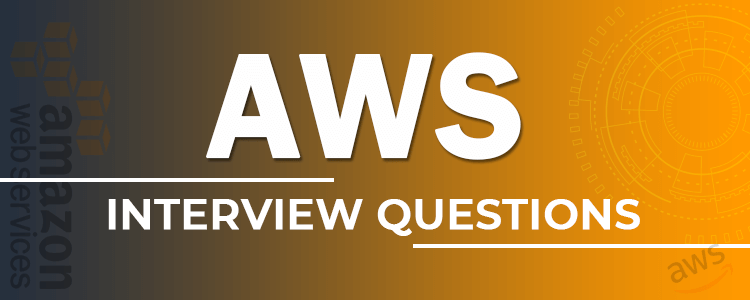



Comments
Waiting for your comments